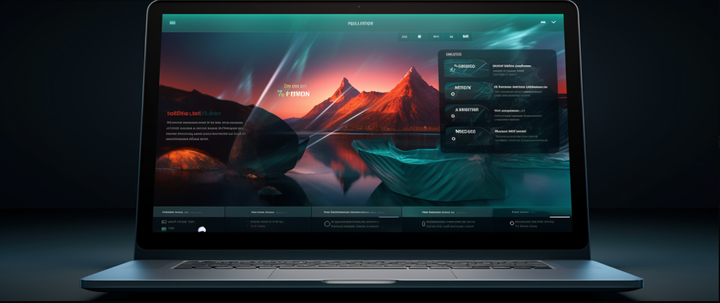The Future of Software Development: How Generative AI is Transforming the Industry
Artificial intelligence is revolutionizing how software is created through the rise of generative AI models.

Artificial intelligence and machine learning are transforming software development in fascinating ways. While algorithms have automated repetitive coding tasks for years, a new form of AI called "generative AI" promises to take automation to the next level by writing entire segments of code on its own.
Generative AI models are trained on vast amounts of existing source code to understand programming languages, APIs, coding patterns and more. They can then produce working code to complete tasks specified in natural language. As these models continue improving at rapid pace, they have the potential to greatly accelerate development cycles and help programmers work at a higher level of abstraction.
In this blog, we will explore how generative AI is currently augmenting software development processes, the technical challenges remaining, and potential future applications that could revolutionize how software is created. Buckle up as we take a look at the generative future of coding.
The Rise of Generative AI
Generative AI refers to machine learning techniques that allow computers to generate new content, such as text, code, images or audio, based on patterns learned from large datasets. The most popular form is the generative adversarial network (GAN), where two neural networks compete against each other to generate increasingly realistic outputs. When applied to text generation, it's often called a language model.
Over the past few years, the capabilities of language models have rapidly improved thanks to advances in deep learning, vast datasets and increased compute power. Models like GPT-3, Codex and PaLM have demonstrated the ability to generate human-like text, answer questions, summarize documents and even write code. Just provide a natural language prompt, and they can produce coherent completions.
This progress is driven by the sheer scale of these models. For example, OpenAI's GPT-3 has 175 billion parameters, while DeepMind's new PaLM model has 540 billion! All those parameters allow them to learn the nuances of human language from ingesting massive corpora of text data, including books, websites and code repositories.
Generative AI for Software Development
Given their facility with language and pattern recognition, generative models hold exciting potential for automating parts of the software development process. Writing code requires mastering the grammar and vocabulary of programming languages, APIs and frameworks. For a skilled developer, it's second nature, but also repetitive and time consuming. This makes it an ideal task for AI assistance.
Here are some of the ways generative AI is already being applied:
- Code completion - As developers type, smart code editors can suggest full lines or even blocks of code to speed up programming. TabNine and GitHub Copilot are popular examples, powered by Codex and GPT-3 respectively.
- Bug fixing - Developers can describe a bug in plain English and generative models can suggest potential fixes by learning from human patches applied to similar issues. Facebook is testing this with Codex on its massive codebase.
- Code search - Finding code snippets to reuse is made easier with AI that can match natural language queries to relevant locations in codebases. For example, searching "parse json response" could pull up examples.
- Code generation - Instead of writing boilerplate code from scratch, developers can generate code templates for common tasks by prompting the AI. For instance, a model could produce starter code for a web API endpoint.
- Documentation - Keeping documentation synchronized with code is challenging. AI can auto-generate documentation by analyzing code comments and docstrings. Amazon's CodeWhisperer uses GPT-3 for this.
- Refactoring - Restructuring code for simplicity or performance can be automated by having AI rework code to meet specific criteria while preserving functionality.
The key benefit is that generative AI allows programmers to operate at a higher level of abstraction - focusing on the intent and outcomes rather than implementation details. This has the potential to make developers more productive and able to create better quality code.
Challenges and Limitations
Despite the promise, integrating generative AI into real-world software engineering workflows remains challenging. Some of the top limitations today include:
- Accuracy - Even top models still make mistakes which could lead to bugs if used directly in production code. Their outputs need to be thoroughly reviewed and tested.
- Explainability - It's often unclear why AI generated a specific piece of code. Lack of transparency makes it hard to troubleshoot when problems occur.
- Integration - Seamlessly integrating AI writing assistants into IDEs and existing workflows is difficult compared to standalone usage.
- Knowledge - Models may generate illogical or insecure code if they don't have sufficient knowledge about specific programming languages, frameworks and best practices. Their training data needs to be comprehensive.
- Legal - Open source licensing issues can arise if generative models are trained on public code. Production use within companies may also require explicit permissions.
- Creativity - AI is good at repetitive coding, but lacks human creativity and problem solving skills needed for complex software projects. The most value is in augmenting developers rather than fully automating them.
Researchers are actively exploring ways to address these limitations through techniques like reinforcement learning, adversarial training, neural architecture search, knowledge graphs and sandboxed execution. But it will take time to develop robust and trustworthy solutions ready for real-world deployment.
The Future of AI-Powered Coding
Generative AI marks a paradigm shift in programming where code is synthesized from high-level descriptions rather than written manually. As the technology improves, here are some exciting possibilities:
- Natural language interfaces - Developers may no longer need to know programming languages. They could use voice commands or plain English to describe requirements and get working code in return.
- Automated debugging - Bugs could be fixed instantly by describing issues in plain English for the AI to analyze and patch automatically.
- Code generation without coding - Non-programmers could generate custom software by simply explaining what they want the application to do.
- Personalized coding assistants - Developers may have virtual AI pair programmers that learn their style and preferences to generate personalized code recommendations.
- Automatic code translation - Porting code between programming languages could become trivial using AI that understands the semantics of code across languages.
- Higher-level abstractions - Programming languages and frameworks could become more human-centric rather than computer-centric, only needing developers to specify desired outcomes in an intuitive way.
- Fully automated coding - While full automation is unlikely in the near future, AI techniques may one day advance enough to build software end-to-end without human involvement.
The next decade will reveal how much progress can be made towards this vision of AI-driven development. It's an exciting time to be a programmer!
While generative AI won't make human coders obsolete overnight, it promises to amplify their productivity and creativity as trusted assistants. The future is collaborative.
Key Takeaways
Here are the key points we covered about the transformative impact of generative AI on software engineering:
- New generative AI models like GPT-3 and Codex can generate code from natural language descriptions and accelerate development.
- Applications include code completion, bug fixing, documentation, code search and refactoring to increase programmer productivity.
- However, challenges around accuracy, explainability and integration must be overcome before widespread adoption.
- In the future, generative AI may enable natural language programming, automated debugging, code translation and higher-level abstractions.
- Rather than replacing programmers outright, AI will augment them as creative partners, allowing more focus on big picture thinking.
So get ready for your new AI coding sidekick! With continued breakthroughs in research and application of generative models, the future of software development looks more automated, intuitive and human-centric.
The synergies between human creativity and AI productivity will open up exciting new frontiers in our ability to translate ideas into code.


Comments ()